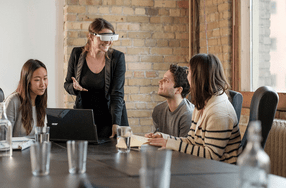Aiding the Blind
tech for vision loss
More than 250 million people lack the gift of sight. While for the most of us even imagining what it is like to live in complete darkness is impossible, some have found a way to make a commitment that’s truly amazing—to end vision loss by 2020. Luckily, we live in the era of wearable technology. […]
